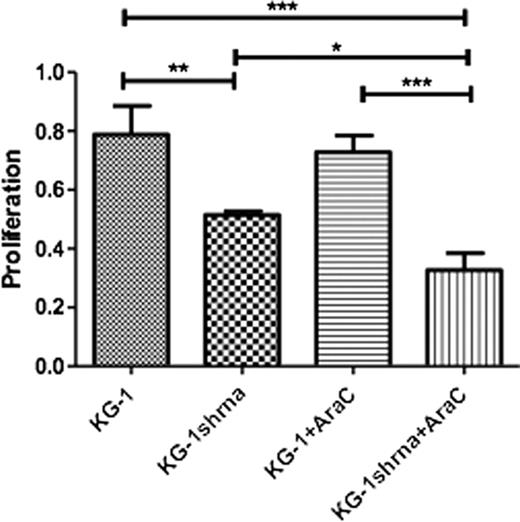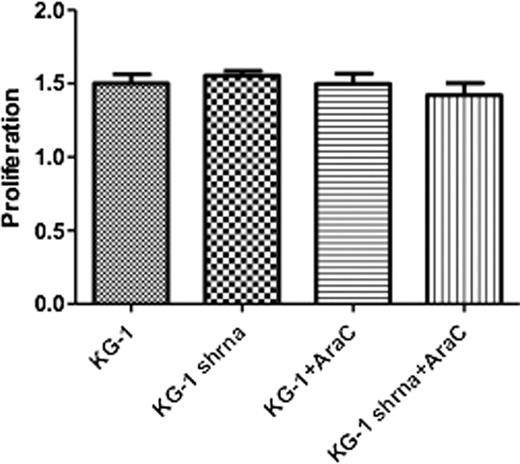Abstract
Abstract 3598
Vascular endothelial growth factor (VEGF) and its cognate receptors (VEGFRs) are known to serve important roles in normal hematopoiesis, but the importance of the VEGF/VEGFR axis in malignant hematopoiesis, namely acute myeloid leukemia (AML), is poorly defined.
Bone marrow from AML patients were analyzed for VEGFRs on the malignant myeloblast populations. Human myeloid leukemia cell lines, KG-1, HL60 and K562, were also evaluated for VEGFR expression. Knockdown of VEGFR1 and VEGFR2 receptors in AML cells expressing these receptors were performed using lentivirus transfection of shRNA. Cell proliferation was quantified using XTT colorimetric assay and apoptosis was evaluated by Annexin V and PI staining.
Bone marrow from 12 consecutive AML patients showed that 33% of patients had malignant myeloblasts that expressed VEGFR1. Of the AML cell lines tested, only KG-1 cells expressed VEGFR1 and VEGFR2. Knockdown of VEGFR1 and VEGFR2 in KG-1 cells were confirmed by Western blot. When VEGFR1 was knocked down in KG-1 leukemia cells, cell proliferation was significant decreased (Figure 1). In addition, knocking down VEGFR1 resulted in enhanced sensitivity to cytarabine chemotherapy (Figure 1). In contrast, knockdown of VEGFR2 did not result in changes in leukemia cell proliferation or sensitivity to cytarabine chemotherapy (Figure 2). When KG-1 leukemia cells knocked down for VEGFR1 expression were transplanted into sublethally, irradiated NOD/scid/IL2R□−/− (NSG) mice (n=10), none of the mice showed engraftment of VEFR1 deficient cells.
Effect of cytarabine on VEGFR1 Knock down in KG-1
Effect of cytarabine on VEGFR2 knock down in KG-1
The VEGF/VEGFR axis is an important determinant in AML pathobiology. In specific, AML cells depend upon VEGFR1 and this receptor represents a promising target for future therapeutic intervention.
No relevant conflicts of interest to declare.
Author notes
Asterisk with author names denotes non-ASH members.



This feature is available to Subscribers Only
Sign In or Create an Account Close Modal